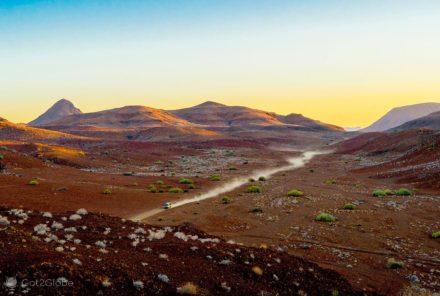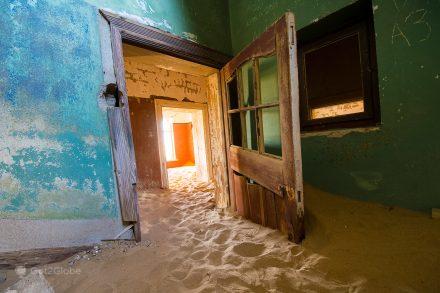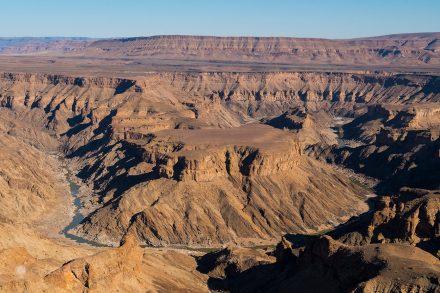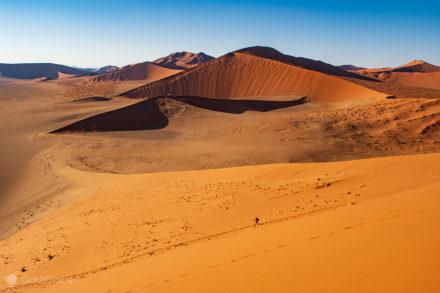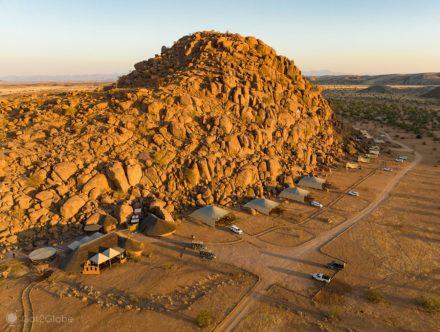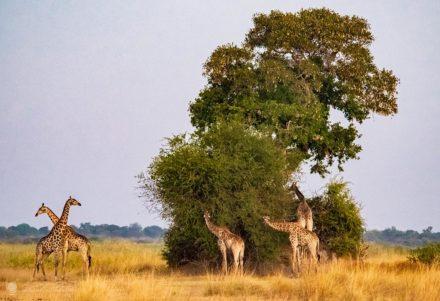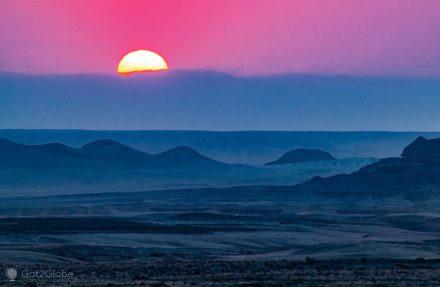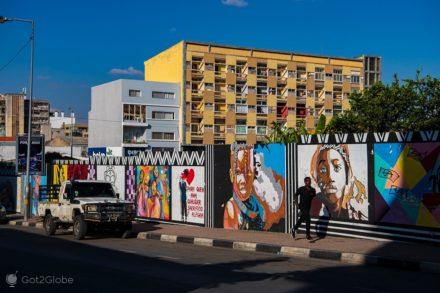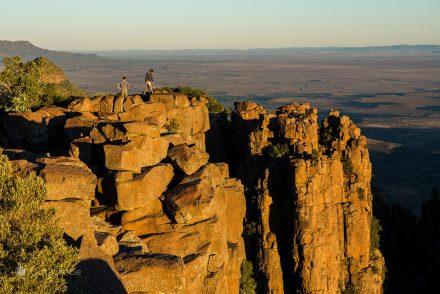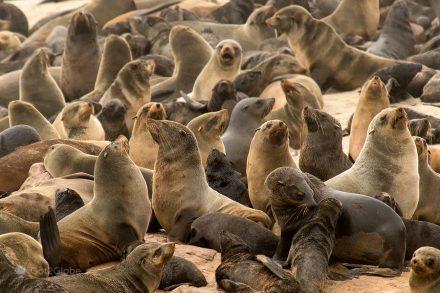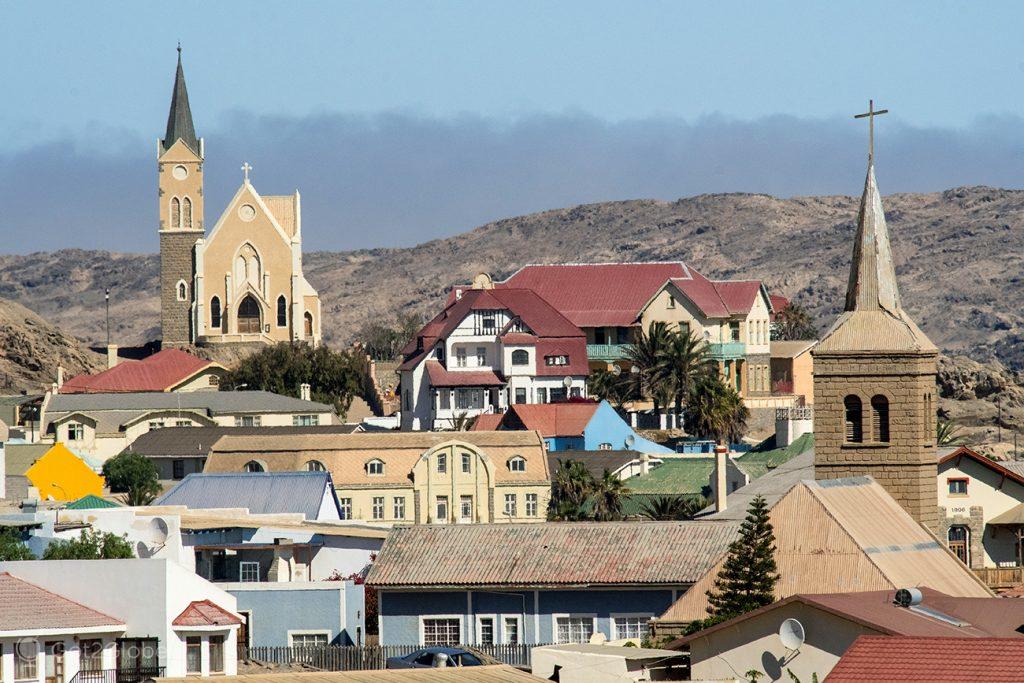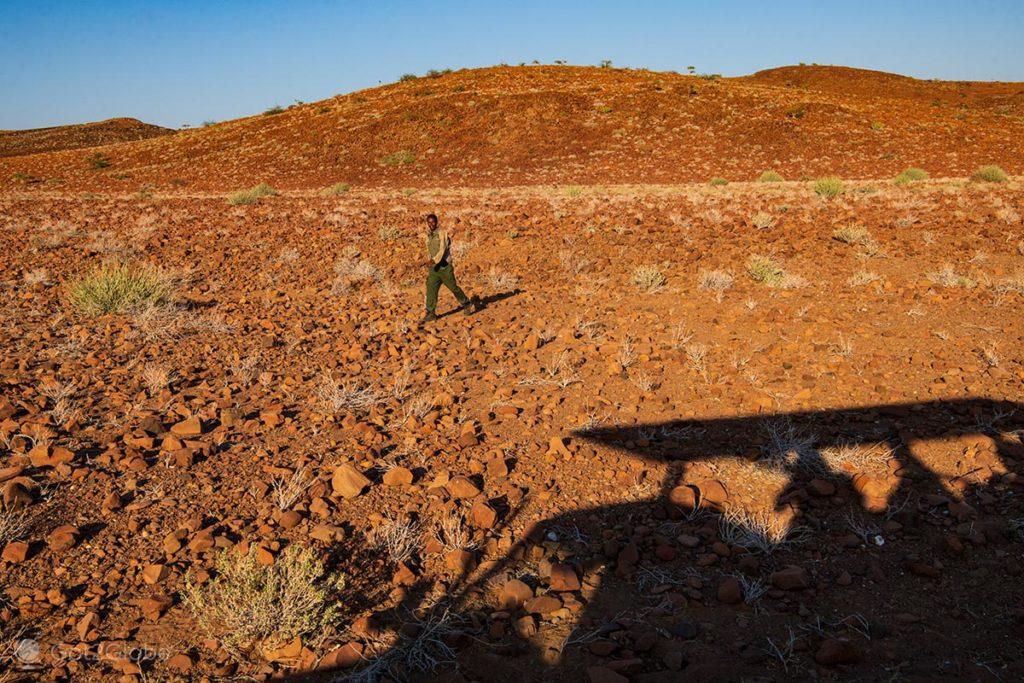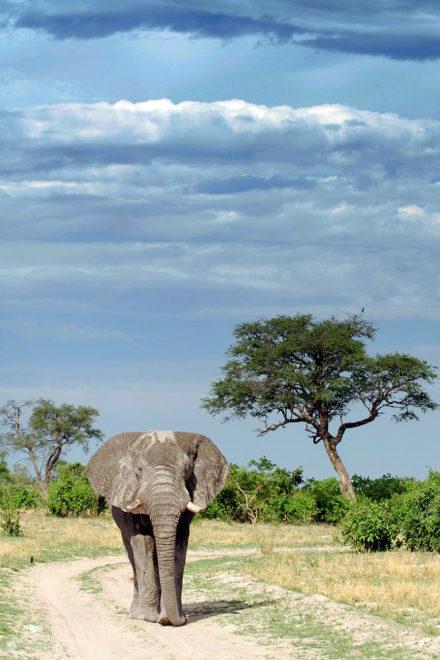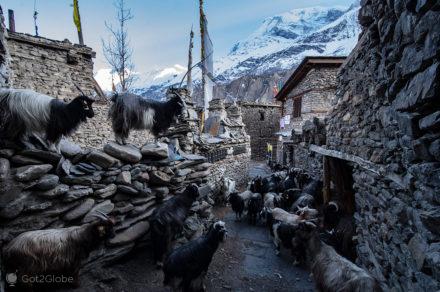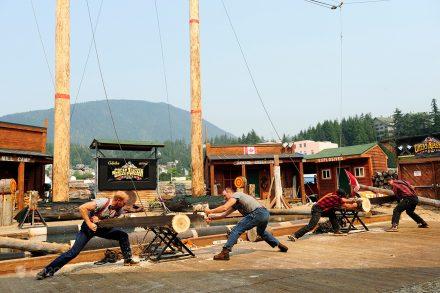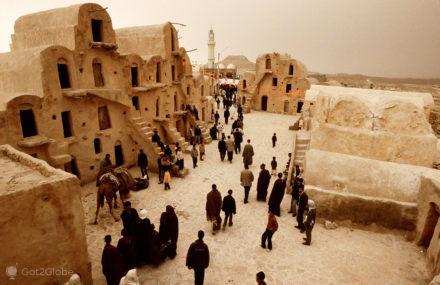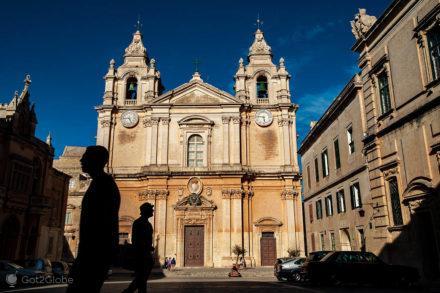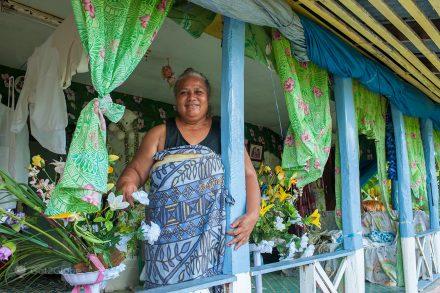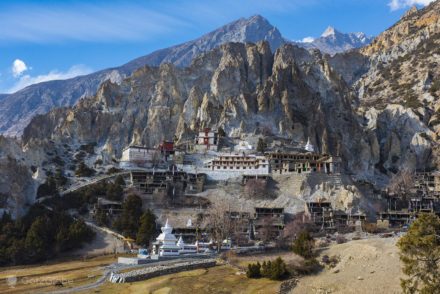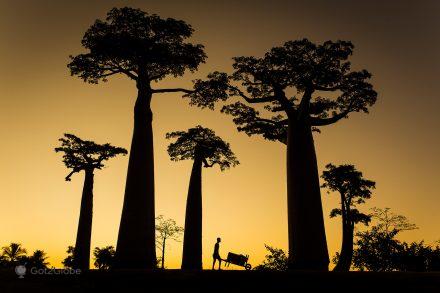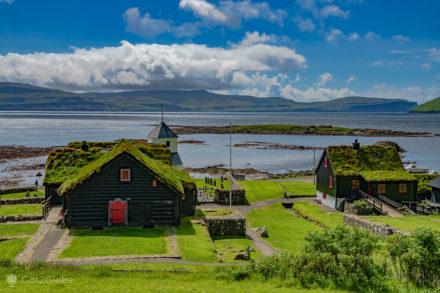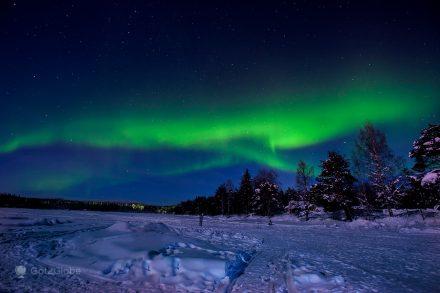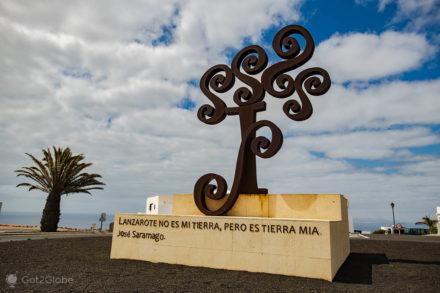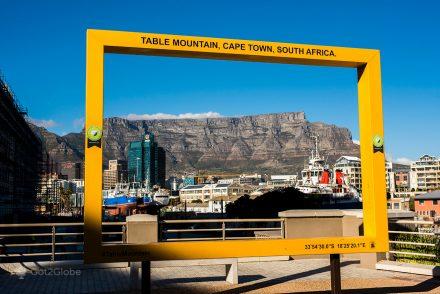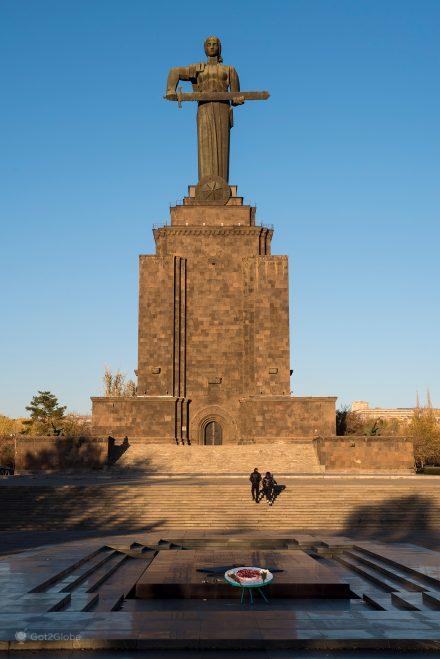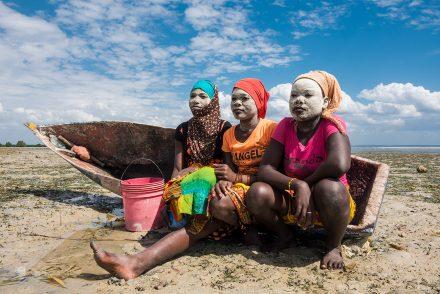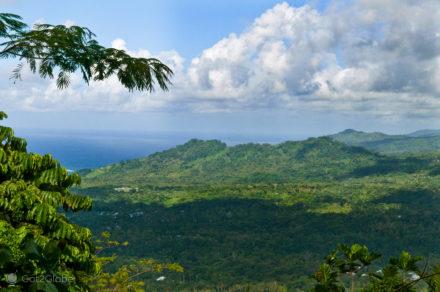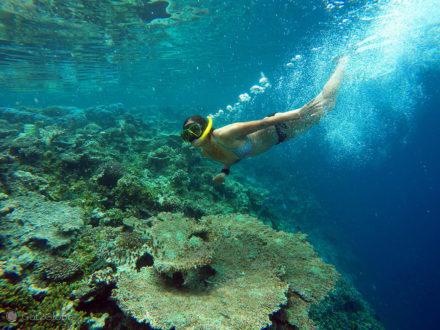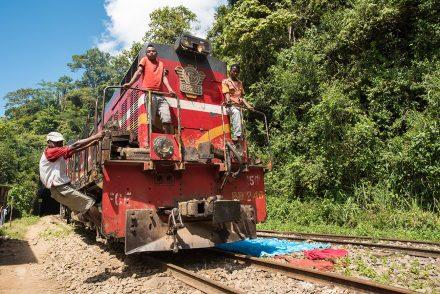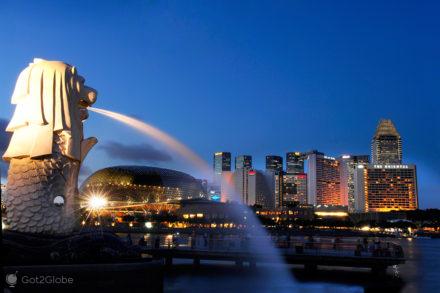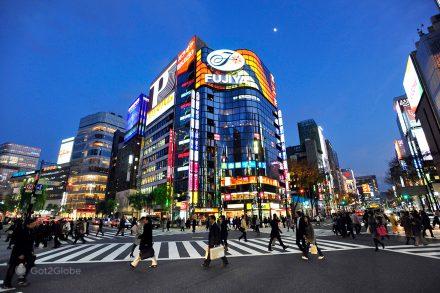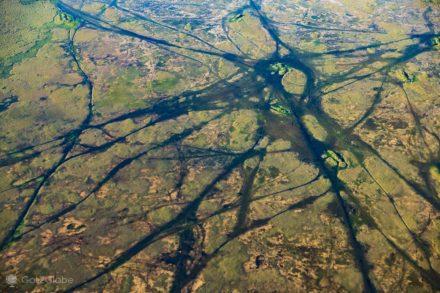Usakos imposes a new “see you soon” from urbanized Namibia.
Its colorful and picturesque houses, with obvious colonial architecture, seduce us to dedicate some time to it. We walked through two or three of its central streets, all with names that confirm the Germanic genesis of the town: to Kaiser Wilhem, to Goethe, to Leutwein.
Until the grandeur and importance of the true destination rescues us from the illusion and makes us resume the journey. We returned to the B2 road that took us from the now distant city of Okahandja. Shortly afterwards, as often happens in Namibia, this category B route condemns us to a D, D1918.
The asphalt gives way to a track made of fine, slippery gravel, generating a trail of dust that the breeze lifts and disperses over the desert plain. We crossed the Namibian region of Erongo. From then on, they pointed north instead of the Atlantic Ocean.
The track undulates to the whims of the plain. Without warning, from one of these summits, we glimpsed the alignment of rocky peaks we were looking for, formed, in large part, by the Pontok Mountains.

The morning and side light, still soft, oranged the whole.
Aware that, soon, the sun would pass to the north and to the back of the formation, we photographed it over and over again, from the most interesting perspectives.
Despite the distance, one of the peaks, towering and sharp, stood out.
A Granite Matterhorn from Namibia
It was the Spitzkoppe, translatable from German as “pointed dome”.
A granite island that reaches 1728m in altitude, its sharp summit elevated some 670m above the yellow-ochre desert of Namib, with the company of a less sharp Little Spitzkoppe that stays at 1584 meters.

During the colonial era of Germanic West Africa (1884-1915), the Germans probably noticed the similarity in the shape of the largest peak with the symbolic mountain of Switzerland.
However, it was only later, in 1946, that mentions of the pompous nickname “Namibia's Matterhorn".
From then on, the mountain's notoriety continued to grow. Stanley Kubrick and Arthur C. Clarke, for example, paid him an unusual tribute.
In 1968, they used Photographs from various perspectives of Spitzkoppe and neighboring mountains as backgrounds for bold sci-fi "2001, Space Odyssey: The Dawn of Man".
Still in the same photographic entertainment, we come across a shepherd leading an Indian file of goats to places with edible leafy bushes.
Herds like that ensure the survival of several families in the surrounding area.
From Cattle Breeding Farm to Damara People Tourist Village
They have little to do with the opulence of the pioneering times of Spitzkopje, a livestock warehouse founded, in 1896, by a so-called Colonial Society, at the heart of a 120 thousand hectare farm, equipped with stables and other infrastructures which, at the turn of the century, housed 1500 head of cattle, 4000 sheep and goats and 120 horses.
After Germany's defeat in the First World War, like the entire Namibian territory, the farm came under the administration of the League of Nations.
In 1964, already under the South Africa, the farm found itself covered by the Odendaal Plan, designed with the aim of guaranteeing territories that the native population could inhabit and explore.

The then owners were expropriated. Six years later, the authorities invited several Damara families to settle there.
The economic and social reality of Spitzkoppe is, today, disparate.
We arrived at the village of the same name, generated by the tourist magnetism of the mountains.
The damara still live there, in homes with a shabby look.

They subsist on a few services provided, the sale of lush stones and some basic handicrafts.
We found the final stretch to the reception of the Spitzkoppe complex lined with vendors exhibiting on wattle and daub stalls, holding and displaying their pieces as close as possible to those passing by.

A Himba community also settled there, displaced from their natural region of Kaokland, (located further to the northwest of Namibia), due to the money paid by outsiders who took the opportunity to visit the village and appreciate their peculiar way of life.
From Arch to Little Bushman Paradise
We opened a tour around the base of the Spitzkoppe mountain and part of the Pontok mountains that reveals unmissable geological, archaeological and historical points.
Each one reveals its own particular view of the main peak.

The first one we come across is Arco, a virtuous erosive formation with slippery access.
It frames part of the Pontok Mountains.
It serves as home to a few cape damans, accustomed to enjoying the clumsy ascents and descents of visitors to the panoramic balcony of their home.

From the arch's eye, we could see the base of the Spitzkoppe granite massif.
This is where we go, pointed to the fenced entrance, guarded by park staff, of the Small Bushman Paradise, one of several groups of cave paintings that San hunter-gatherers created on the rock between 2000 and 4000 years ago. years.
By comparison, the oxidized walls they used as a screen will be at least 120 million years old.
Samuel, the Damara guide who welcomes us, reveals to us blood-colored pictograms of most of the animals that the Bushmen lived with and that they got used to hunting:
little men chasing antelopes and, among others, easily identifiable by their characteristic shape, rhinos.

More Bushman Rock Paintings at Bushman Paradise
We said goodbye and continued. This time, in search of Bushman Paradise. On its path, we skirt the vast granite to its eastern threshold.
By the time we arrive at the corresponding station in the complex, the somewhat chubby guide appears haunted by our appearance. “…I only do this because I couldn’t find anything else. As you can see, I'm not exactly athletic. Today alone I’ve been up and down four times!” she laments.
We feel supportive, not really, we disarm. The guide complies. She follows us up the slope, pulling on the support chain placed to avoid potentially deadly falls.
When we reach the intermediate, flatter zone where the local cave paintings were hidden, it is the natural forts with rounded rocks and the Namibian panoramas as far as the eye can see that enchant us, more than the ancient works of the Bushmen.

On the way back to the south side, we took a look at two old military graves, from the time when a fortress defended the Colonial Society's huge farm.
Back at the exit, we are distracted by a mottled, zigzagging flock of Angolan chickens.

Compressed by the demands of a route lasting thousands of kilometers, between Windhoek and the extreme northeast of Namibia, we hurriedly headed towards Swakopmund.
Several Days Later, the Return to Grande Spitzkoppe
We were so dazzled by the majestic Spitzkoppe that we forced a later end of the day to be spent at its base. We fit it in at the end of the return journey between the distant Bwabwata National Park (Caprivi Strip) and Windhoek.
Now, we had only covered part of the stretch from Uis and we were already considering the bet as winning.
We leave this town with a West African atmosphere. Shortly afterwards, the D1930 road we are on turns out to be a deserted rollercoaster. It crossed an almost savanna full of gazelles, baboons and bustards.
As happened on Windhoek's first trip, but inverted, we see the Spitzkoppe-Pontok formation approaching, defining itself, tearing through the blue sky without a speck of cloud.
We arrived at the camp where we would spend the night with the sun dipping behind the rock massifs to the west of the formation.
We walked between the tents, along trails that led to their base. We climbed and descended rocks on the edges of the trails, all depending on how the sky was burning and turning the mountains into ephemeral monuments of blackness.
When, with the dawn and our awakening, the night surrenders again, we notice decorative details of the camp that had passed us by: the boilers in the tents and the water in our showers, heated over fires.

An old windmill above lamps made from twisted logs.
Right there, in front and above, the great Spitzkoppe, pinkened by the beaming sun.
A charming reflection of you in an elusive reflecting pool, a blue much darker than the celestial one.

DESTINATION FORM
1 – Windhoek
2 – Usakos
3 – Spitzkoppe
TAAG – Angolan Airlines: Flight Lisbon – Luanda – Windhoek (Namibia) in TAAG: www.taag.com per from €750.
Book your Namibia travel program with Lark Journeys: www.larkjourneys.com Whatsapp: +264 81 209 47 83
FB and Instagram: Lark.Journeys




















